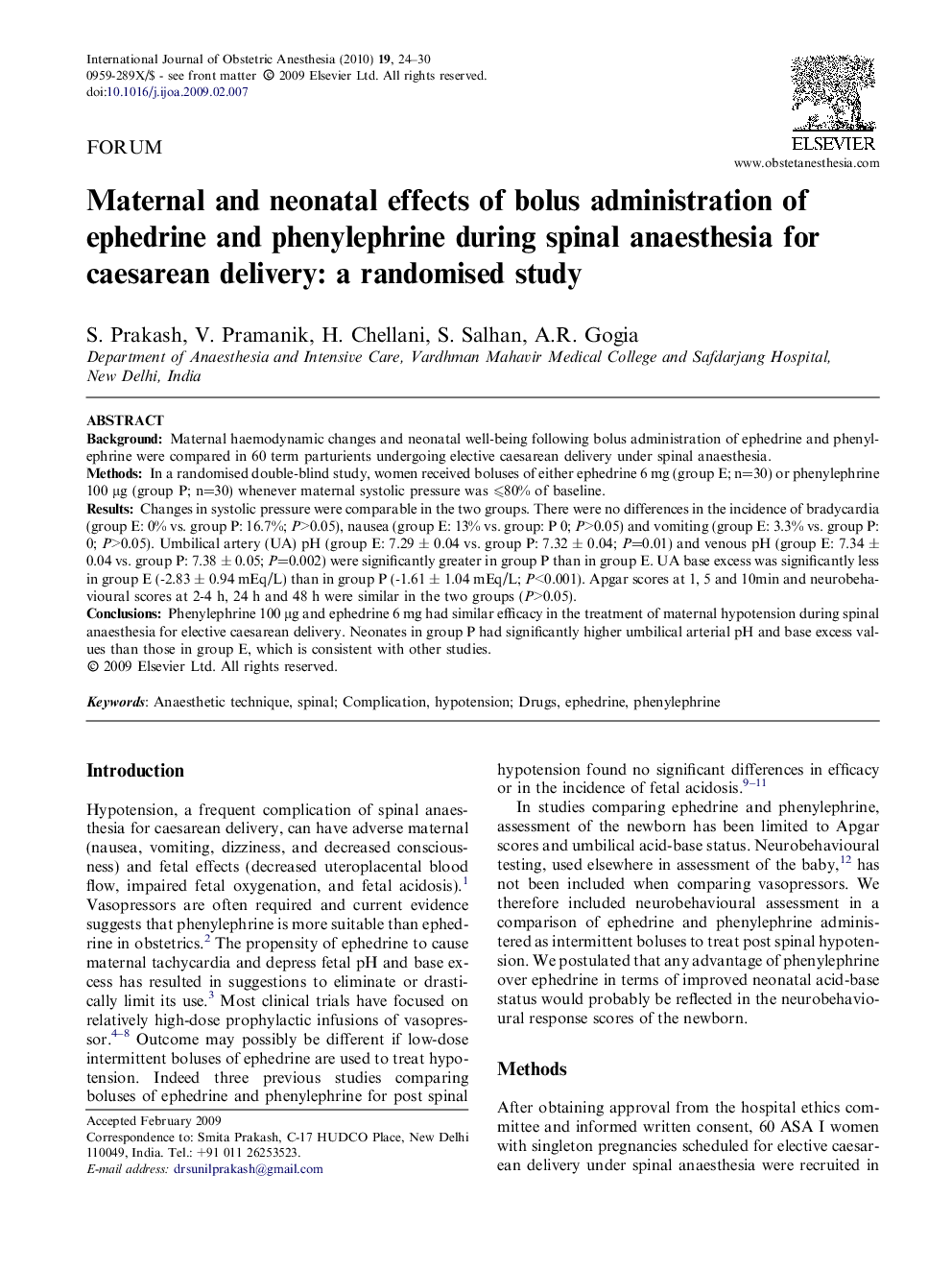| Article ID | Journal | Published Year | Pages | File Type |
|---|---|---|---|---|
| 2758282 | International Journal of Obstetric Anesthesia | 2010 | 7 Pages |
BackgroundMaternal haemodynamic changes and neonatal well-being following bolus administration of ephedrine and phenylephrine were compared in 60 term parturients undergoing elective caesarean delivery under spinal anaesthesia.MethodsIn a randomised double-blind study, women received boluses of either ephedrine 6 mg (group E; n=30) or phenylephrine 100 μg (group P; n=30) whenever maternal systolic pressure was ⩽80% of baseline.ResultsChanges in systolic pressure were comparable in the two groups. There were no differences in the incidence of bradycardia (group E: 0% vs. group P: 16.7%; P>0.05), nausea (group E: 13% vs. group: P 0; P>0.05) and vomiting (group E: 3.3% vs. group P: 0; P>0.05). Umbilical artery (UA) pH (group E: 7.29 ± 0.04 vs. group P: 7.32 ± 0.04; P=0.01) and venous pH (group E: 7.34 ± 0.04 vs. group P: 7.38 ± 0.05; P=0.002) were significantly greater in group P than in group E. UA base excess was significantly less in group E (-2.83 ± 0.94 mEq/L) than in group P (-1.61 ± 1.04 mEq/L; P<0.001). Apgar scores at 1, 5 and 10min and neurobehavioural scores at 2-4 h, 24 h and 48 h were similar in the two groups (P>0.05).ConclusionsPhenylephrine 100 μg and ephedrine 6 mg had similar efficacy in the treatment of maternal hypotension during spinal anaesthesia for elective caesarean delivery. Neonates in group P had significantly higher umbilical arterial pH and base excess values than those in group E, which is consistent with other studies.
